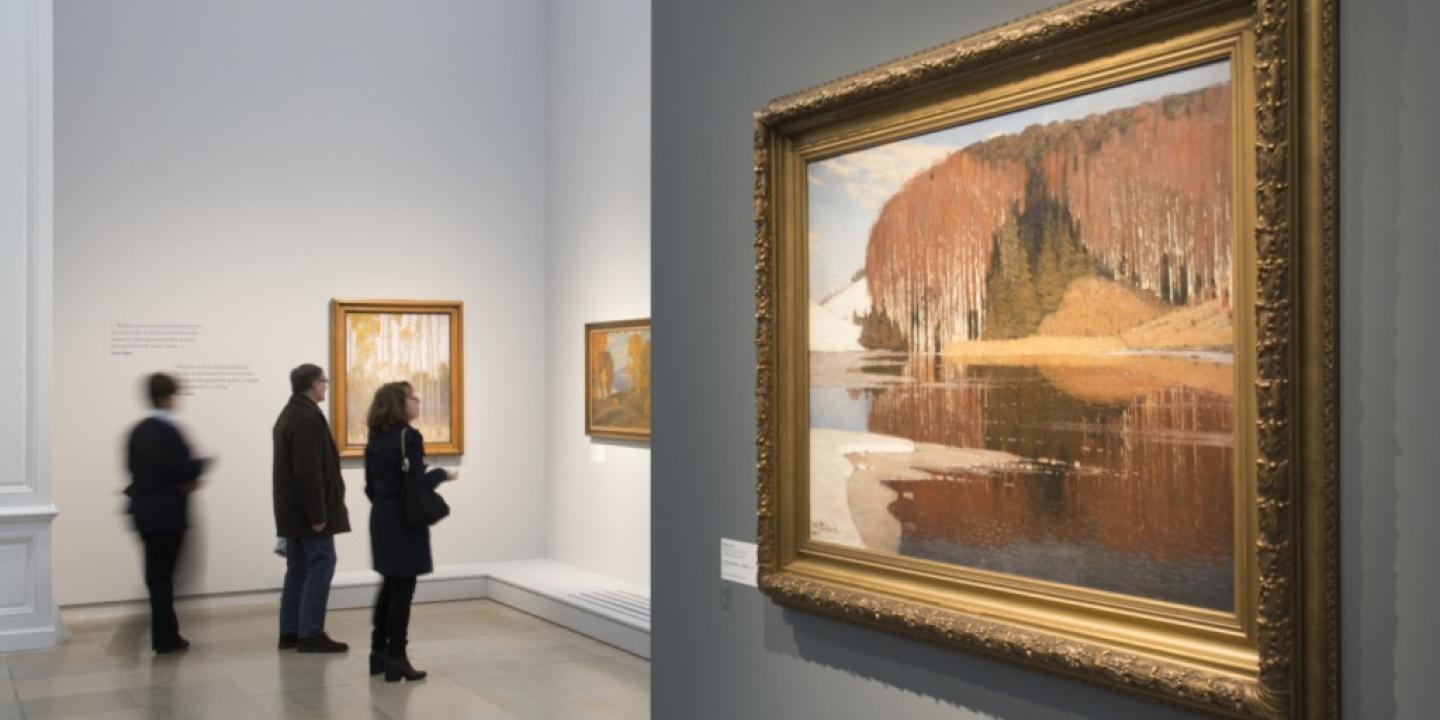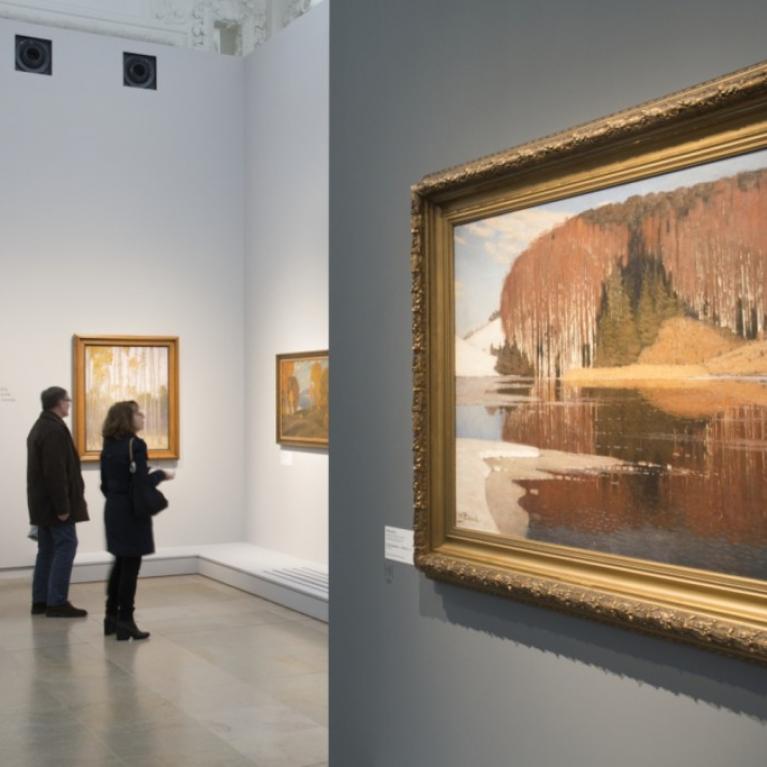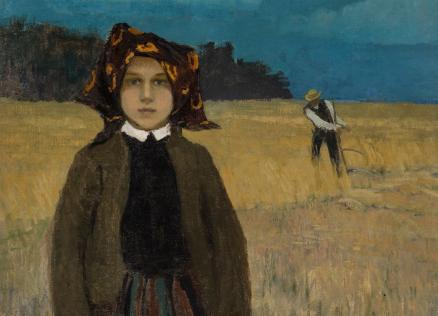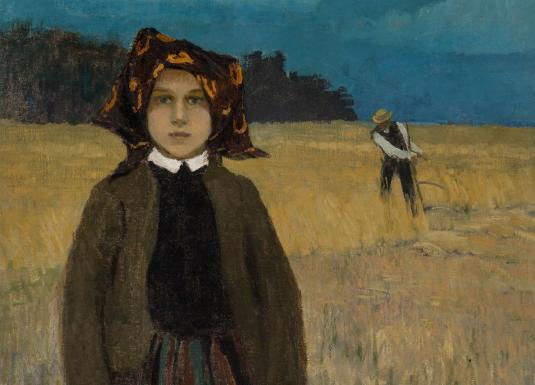Wild Souls. Symbolism in the Baltic States
The four national museums of the three Baltic countries in Riga, Tallinn, Vilnius, and Kaunas are preparing the exhibition Symbolism in Art of the Baltic States (Âmes sauvages. Le symbolisme dans les pays baltes) to be shown in Paris, France in 2018. This is one of the most ambitious joint centenary projects between the three Baltic States and one of the largest Latvian Centenary Celebration events abroad.
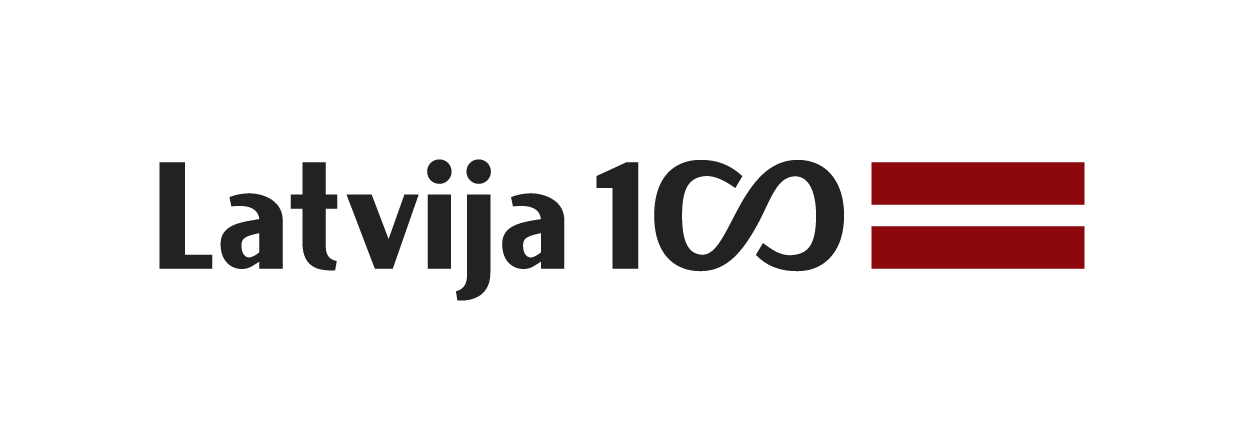 2018 is an important time in the centenary celebrations, not just for Latvia, but for all three Baltic nations.
2018 is an important time in the centenary celebrations, not just for Latvia, but for all three Baltic nations.
In 2015, the Latvian National Museum of Art proposed an initiative – to create a joint project with its Baltic colleagues – and suggested this to French curator and symbolism researcher Rodolphe Rapetti to develop a unified art exhibition, which would be shown in the European cultural metropolis – Paris. France has always held a special place among the Baltic States, because many Baltic artists have been closely connected with French culture.
Since 2016 the Ministry of Culture of the Republic of Latvia, the Latvia’s Centenary Bureau, the four national museums of the three Baltic countries, the Embassy of France and the French Institute in Latvia, as well as the Ministry of Foreign Affairs of the Republic of Latvia, and the Embassies of Latvia, Estonia, and Lithuania in France have been working intensively to develop the exhibition in cooperation with France. French Minister of Culture Audray Azoulay has expressed her support for the project and acknowledged it highly. Paris responded positively to the initiative of the above mentioned partners saying that they would host the exhibition, which will be a significant event in the cultural diplomacy programme of the Latvian Centenary.
The exhibition Wild Souls. Symbolism in the Baltic States (Âmes sauvages. Le symbolisme dans les pays baltes) will take place in April – July 2018 with the goal of introducing the French audience to the work of Estonian, Latvian, and Lithuanian visual art that was created during the period between the end of the 19th century and independence in 1918. The main idea of the project – to show Western Europe that the art produced in the burgeoning Baltic States was at a high professional standard, and its characteristics were in line with what was taking place in European art in general at the time. Symbolism, which came into being in France during the second half of the 19th century, influenced all of European culture, as well as Baltic art scene.
The themes used in this artistic movement, which include mythology, folklore, fantasy, the world of dreams and visions, and decadence are reflected in the work of outstanding Latvian artists Janis Rozentāls, Vilhelms Purvītis, Johans Valters, Pēteris Krastiņš, Rūdolfs Pērle, and Teodors Ūders. Lithuanian art will be represented by works from such classic symbolists as Mikalojus Konstantinas Čiurlionis and Ferdinandas Ruščicas (Ferdynand Ruszczyc), and the Estonians by the works of Kristjan Raud and Konrad Mägi. 133 works have been selected for the exhibition including paintings, graphic art, pastels, drawings, and sculptures.
The general curator of the exhibition and author of its concept is Rodolphe Rapetti (France) – well-known European researcher on symbolism and author of the monograph Symbolism (Le Symbolisme, Paris: Flammarion, 2005), who has long been interested in Baltic art. Mr. Rapetti has been the Curator at the Musée d’Orsay, Director of the Strasbourg City Museums, Director of the Muséum National Jean-Jacques Henner, and Deputy Director of the Museums of France. He has taught at the School of the Louvre, as well as at the Paris X Nanterre University. Rodolphe Rapetti is the author of numerous books and articles concerning the art of the 19th and 20th centuries. His field of study stretches from 1860 all the way to Marcel Duchamp. Rapetti has curated many exhibitions in the largest museums. The most impressive of his latest exhibitions include: Odilon Redon (Grand Palais, Paris, 2011), L’Art de l’automobile. Chefs d’œuvres de la collection Ralph Lauren (Paris, 2011), Van Gogh to Kandinsky: Symbolist Landscape in Europe 1880–1910 (Amsterdam / Edinburgh / Ateneum, Finnish National Gallery, Helsinki, 2012), and Émile Bernard (Musée de l’Orangerie, Paris / Bremen, 2014). At the moment Mr. Rapetti is an official of the Museums of France.
“The exhibition will illustrate the complex interplay of influence and resistance, through which, after becoming acquainted with European cosmopolitanism, Baltic artists forged a language for creative expression appropriate to their own intellectual worlds using elements of traditional culture, folklore, and local oral rhetoric,” describes the idea Rodolphe Rapetti.
The exhibition project is being jointly developed by the four museums from Baltic States – the Latvian National Museum of Art in Riga, the Art Museum of Estonia in Tallinn, the Lithuanian Art Museum in Vilnius, and the M. K. Čiurlionis National Museum of Art in Kaunas. A creative working group has been established, which includes an exhibition curator from each museum working in close cooperation with Rodolphe Rapetti. A sizeable exhibition catalogue is planned.
This ambitious art manifestation will also have a symbolic meaning, because a joint representation of Baltic culture on such a grand scale has only taken place once, when the Baltic States collaborated on a pavilion at the International Exposition of Art and Technology in Modern Life (L’Exposition internationale des arts et techniques appliqués à la vie moderne) in Paris in 1937. The exhibition is being designed to introduce a new concept – Baltic symbolism, through which Estonian, Latvian, and Lithuanian turn-of-the-century art reveals the unique nature of the creativity of each culture, as well as the language of myths, legends, and allegories that portray a time when Baltic artists become increasingly aware of their professional skill in creating visual imagery. This provided the impulse and momentum to promote national self-awareness, and bring into being the idea of an independent nation that is integrated into European culture.
HEAD OF THE PROJECT:
Dr. art. Ginta Gerharde-Upeniece,
Head of the Latvian Visual Arts Department,
Latvian National Museum of Art (Riga, Latvia)
GENERAL CURATOR OF THE EXHIBITION and CONCEPT AUTHOR:
Rodolphe Rapetti, symbolism researcher,
General Curator, National Heritage Trust (Paris, France)
CURATOR OF THE LATVIAN SYMBOLISM PART OF THE EXHIBITION:
Dr. art. Dace Lamberga,
Exhibition Curator, Latvian National Museum of Art (Riga, Latvia)
